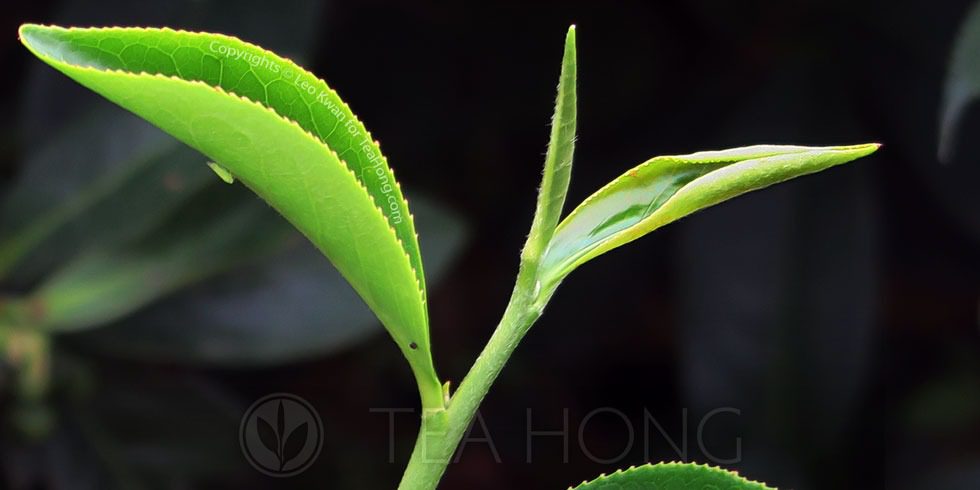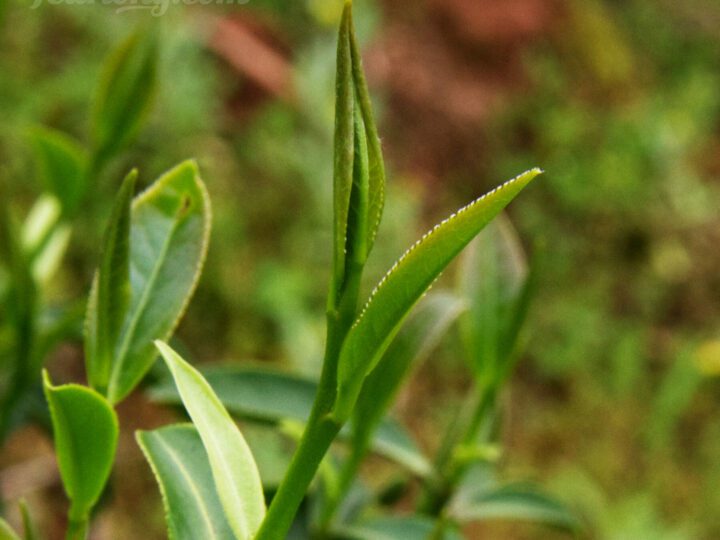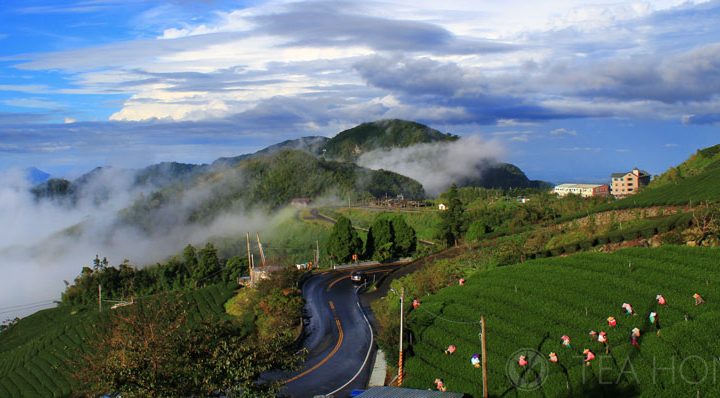Bug-bitten tea
Tea Green Leafhopper is a small pest in the tea field. In the old days when such pests came in numbers, what could you do? Some eighty years ago an oolong farmer in Hsinchu, Taiwan tried to minimise loss so he picked the bitten young leaves early and tried his best to process them.
All 100 catties ( about 60 kilograms ) of it was sold, and for a good price, so he said. Locals said he was bluffing, phong-hong — in the local dialect — blowing wind, so to speak. No one believed that people would buy an oolong which leaves are so small and not so normal looking. So Oriental Beauty began with the not-so-glamorous name, phong-hong tè — bluffing tea.
It turned out the farmer was not lying. People were willing to pay a high price for this bug-bitten tea because of its unique taste and aroma.


A Green Tea Leafhopper on the underside of a leaf of Qingxin Damao. The leaf on the right next to the young shoot is already showing spots and veins that are browned, being caused by the chain reactions after the insect bites.
Chemical warfare
Phytochemicals, including such substances as catechins and other polyphenols, are the plant’s arsenal to fight for better survival. Defence is one of their key functions. Catechins are there in the tea leaves to deter quite a number of offence, well, except for that coming from certain evolved bugs, such as this tea green leafhoppers.
Much like when our body is attacked by insect bites or other infections, we produce anti-bodies and other defence chemicals to ward off such attacks, the tea leaf does the same. The leaves of this particular cultivar, Qingxin Damao, generate a particular kind of phytoalexin when this tiny green cicada bites.
An ally is also called for — spiders — to eat off these little hoppers. The leaves release a signal to the carnivorous crawlers in the form of plant hormones, a cocktail of synomones, which smell is not unlike that of the characteristic Oriental Beauty aroma. That is how the farmer knows when is the right time to start harvesting.
Beauty of a tea
These changes in the chemistry of the baby leaves, i.e. the chain reactions caused by this little green fly, condition the leaves for what will result in the authentic taste profile of this unique Taiwan oolong. Perhaps that is why our farmer said this tea is 60% cultivation, 30% weather, and only 10% processing skills. That even though the amount of skills, experience and manual work involved in this processing is the most demanding I have ever seen.
Every time when I sit back to savour the unique aroma and cleansing taste of this deep oxidation white tip oolong, the delicately beautiful small leaves are ever there to amaze me of the wonders possible by ingenious human labour working with the gifts of Nature.
In case you need the Chinese character equivalents for some of the above terms:
- Tea Green Leafhopper 小綠葉蟬 / 浮塵子
- Hsinchu 新竹
- Phong-hong tè 膨風茶 ( romanised basing on Minnan )
- Qingxin Damao 青心大冇





